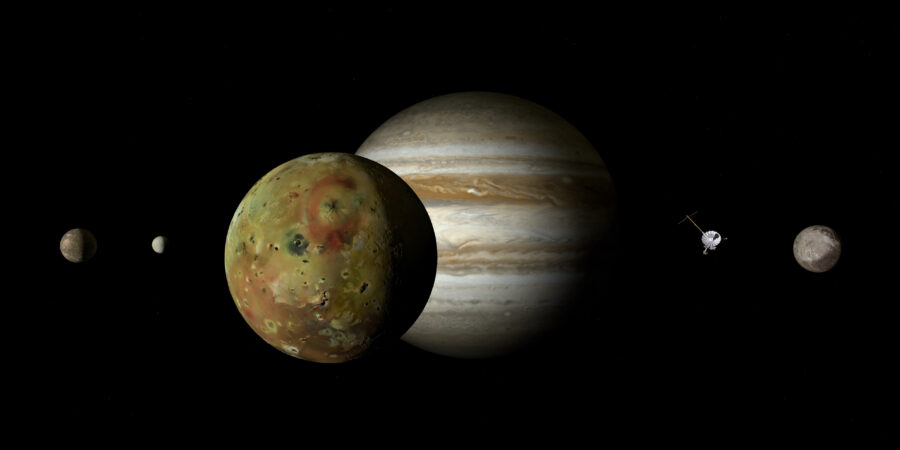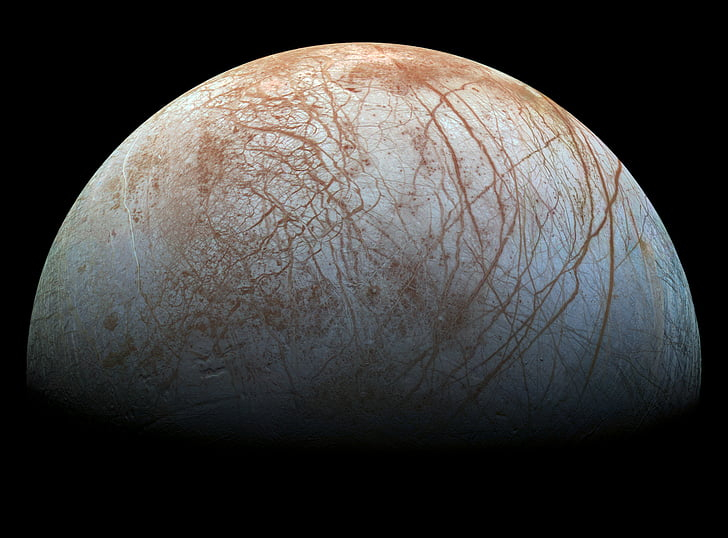See The Stunning Look At Jupiter’s Volcano Moon

One of Jupiter’s largest moons put on a show for NASA’s Juno spacecraft last week (October 15) when it passed within 8,000 miles of the celestial body. The images captured by Juno (posted by NASA on X) are some of the best taken of the volcanic moon, and NASA stands to grab even better photos at the beginning of next year.
NASA shared amazing views of Io, a moon of Jupiter, taken by the Juno spacecraft as it performs a flyby.
In early 2024, the Juno spacecraft will pass within 1,000 miles of Jupiter’s moon Io, making way for some even more spectacular images of Io’s tumultuous surface.
NASA launched the Juno Mission set to explore the gas giants of the solar system in 2011, and the special craft reached Jupiter’s orbit in 2016. Due to the gigantic size of Jupiter (making the planet extremely influential in the formation of the solar system), understanding more about the planet could unlock information regarding the origin of the solar system and how our planet came into existence.
Io is the most volcanically active moon in our solar system, in part because of the gravitational pull of Jupiter.
In fact, Jupiter is the largest planet in our solar system. The gas giant has a total of 92 moons, and Io is the planet’s fifth moon. Io is slightly larger than our own moon, and its surface is riddled with more than 400 active volcanoes (some that are taller than Mount Everest), which erupt on a regular basis, making the moon’s surface extremely volatile.
Io is the most volcanically active celestial body in our solar system, and for good reason. The moon is locked in a neverending tug-of-war between the gravitational pull of Jupiter, Europa, and the biggest moon in our solar system, Ganymede.

NASA explained that this setup results in Io constantly being pulled, stretched, and squeezed, causing the moon to crack and erupt over and over again. You could say that it suffers everlasting growing pains.
Io’s size has a lot to do with the moon’s significance. It is the fourth-largest moon in the solar system and Jupiter’s third-largest moon. Io is also considered a Galilean satellite. In 1610, Galileo Galilei was the first to observe celestial objects orbiting another object other than the sun. Galileo was looking at four of Jupiter’s moons: Io, Europa, Ganymede, and Callisto.
NASA has released all images taken of Jupiter’s moon Io to the public, allowing “citizen scientists” to inspect them and help with processing.
The images captured by NASA’s Juno last week were some of the clearest images humans have ever viewed, and they only stand to get better as time passes. In the images, you can see the red and brown surface of the moon, riddled with black splotches.
The splotches indicate heavy lava flows, and one picture even shows what could be a volcanic plume blasting out into space from the moon’s surface. The world of Io is an extremely volatile place that would be a nightmare (and uninhabitable) to any human.
The best thing about the Juno project is that NASA has invited the public to assist in the processing of the images captured. All of the Juno images are available to the public online and able to be downloaded for free. “Citizen scientists” are encouraged to take part in fine-tuning the collected images and sharing what their final products with the world.











